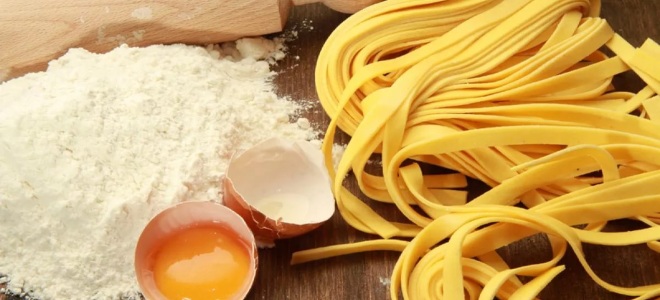
Delicious homemade noodle dough recipe. Homemade rye flour noodles. How to cook buckwheat noodles.
Properly cooked homemade noodles will transform any dish with her participation and make it simply unforgettable in taste. There is more than one recipe for preparing this product, which is in demand in cooking, and each time, if the recommended technology is followed, you can get an excellent result.
How to make homemade noodles?
homemade noodles, the recipe of which may differ in composition and execution technology, in any case, is prepared subject to certain basic points that accompany all variations:
Widely used in Far Eastern cuisine, accompanied by soups, sauces and fried foods. Homemade noodles are simple and easy to make with flour and egg mixed together to form a stiff dough; rolled and cut into thin strips to make noodles.
The strips can be cut into numerous shapes and sizes and can be fresh or dried. Noodles can be made from a variety of flours, such as wheat flour, flour flour, buckwheat flour, potato flour or rice flour. Typically, Chinese egg noodles are made from wheat flour, which can be used in soups, french fries, or sauces using meat, vegetables, or seafood.
- The flour is pre-sifted, enriched with oxygen.
- The final structure of the dough should be completely non-sticky, dense and well mixed.
- The resulting base is kept under a film or towel for at least 30 minutes, after which it is thinly rolled out by hand or using a special machine.
- Read on to learn how to dry homemade noodles. Initially, the rolled layers are completely dried a little on a towel, after which they are cut into strips and dried under room conditions, spreading in a thin layer.
Homemade noodles for soup - recipe

The dough for homemade noodles, which is planned to be used for making soup, is cooked on eggs without adding water and becomes very dense. Ideally, it is better to use a special machine for rolling it out, then the whole process of creating the product will seem easy and exciting, and the result is a delicious first course for dinner.
Cellophane noodles are made from mukong flour and are served as a noodle dish with sauce or rice, while rice noodles are used in soups. They are ideal storage ingredients, quick and easy to prepare, and very versatile. The history of noodles claims that Chinese noodles are the ancestor of all noodles and are world famous. The main ingredient that goes into making noodles is wheat flour.
In the northern part of China, noodles have become a staple for people, although rice is still a vital food in the southern part. Noodles are significantly different in northern and southern parts of China. In the south, they are egg noodles with plain flour as the main ingredient, while in the north, the noodles are composed of wheat flour, usually without the use of eggs.
Ingredients:
- egg - 1 pc.;
- flour - 100-120 g;
- salt - a pinch.
Cooking
- Sift the flour with a slide, add salt, beat in the egg and butter, knead thoroughly and for a long time, adding flour if necessary.
- Having achieved the desired texture, leave a lump for proofing under the film for an hour.
- The base is rolled out thinly, sprinkled with flour, rolled up and cut into fragments of the desired thickness.
- The resulting coils are unfolded and dried on a towel.
Homemade egg noodles - recipe
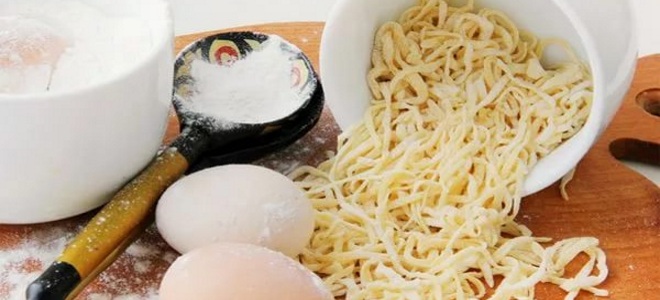
Having cooked on eggs according to this recipe, it will be easier to roll out the base and manually. The oil present in the recipe softens the structure and makes it more supple and plastic. Do not forget to flour the work surface and layers of dough so that the rolling pin does not stick to them. Taking into account the proofing time, the entire process of creating home product will take about an hour.
Homemade egg noodles - recipe
Traditionally, in China, the noodles are delicately handmade with a unique technique of flouring, grinding, pulling and cutting the noodles, where each step is done by hand. There are a variety of noodles which include wheat, egg, rice vermicelli, buckwheat, rice noodles, each with a slight difference in taste and texture. Noodles are often made from unleavened dough, which is rolled flat and cut into various shapes.
While long thin strips are the most common variety of noodles, they are also cut into various shapes such as waves, spirals, tubes, strings, or shells. These noodles are usually cooked in boiling water, sometimes with butter and salt added.
Ingredients:
- eggs - 3 pcs.;
- flour - 300 g;
- vegetable oil - 1.5 teaspoons;
- salt - 1 teaspoon.
Cooking
- Homemade egg noodles are easy to make. Eggs are beaten into the sifted flour, salt, oil are added and the base is kneaded thoroughly.
- Leave the resulting base for 30 minutes to swell the gluten.
- Divide the lump into several parts, roll each thinly, roll up and cut into fragments of the desired thickness.
- The resulting coils are unfolded, laid out on a towel, allowed to dry.
Homemade noodles without eggs - recipe

Homemade noodles without eggs Italian pasta, prepared from special durum wheat flour with a high gluten content. The use of a regular product from soft varieties is not allowed, and without eggs, delicious homemade noodles will not work out of it. If the necessary raw materials are available, you can safely proceed to the creation lean version blanks.
They can also be stored for a short time in the refrigerator or dried and stored for later use. The noodles are often fried or sautéed in gravy or in soup. Homemade noodles are naturally better than store-bought noodles as they are fresher, richer, taste better and can be served with a mix of a variety of ingredients. meat products, vegetables and sauces combined and fry to give a kick to the dish.
Noodle recipes There are many delicious recipes, which you can cook with noodles to enjoy delicious flavor recipes and enjoy nutritious and healthy homemade noodles. Some of the popular dishes and many more are on the list. Noodle Variations There are many variations that you can give when making noodles. Noodles are eaten hot or cold, steamed, fried, fried, fried, boiled, or served in soup.
Ingredients:
- flour - 2-2.5 cups;
- water - 1 glass;
- salt - 1 teaspoon.
Cooking
- Sift the flour with a slide with salt, pour in a little water and knead a tight dough.
- Leave a lump for 30 minutes under the film.
- Further, homemade noodles without eggs are made in the same manner as egg noodles. The base is rolled out, rolled up, cut, untwisted and dried.
Homemade noodles for lagman

Dry, the recipe of which is similar to the variations described above, is often used to decorate the lagman. However, an authentic dish requires the preparation of an exhaust product, the process of creating which, although fascinating, requires a lot of time, patience and skill.
They are an excellent source of protein and extremely high in complex carbohydrates. There are two options for preparing these recipes. Ultimately, however, he cooks; we love to eat noodles and are some of the favorite foods for most of us, especially kids.
How to make homemade noodles: ingredients. In a bowl, combine the egg and flour and mix well to make a slightly smooth dough. Cover the dough and rest for 10 minutes. Dust the flour on the surface and roll the dough using a rolling pin, roll up and cut them into thin strips. Unfold the separation strips and you can cook the noodles immediately.
Ingredients:
- flour - 500 g;
- egg - 1 pc.;
- warm water - 120 ml;
- salt - ½ tbsp. spoons;
- soda - a pinch;
- vegetable oil - 1 cup.
Cooking
- Beat the egg a little with salt, pour in warm water, stir.
- Pour flour in portions and knead until a dense lump is obtained, which is left for an hour under a moistened towel.
- In a tablespoon of water, dissolve a pinch of salt and soda and rub the resulting mixture into the dough with your hands.
- Flagella are made from the base, 1-1.5 cm thick, lubricated with oil and left under a towel for 20 minutes.
- The blanks are pulled out with oiled hands up to 0.5-0.7 cm, left for 20 minutes.
- Repeat the procedure several times until the desired thickness is obtained.
Homemade noodles on yolks
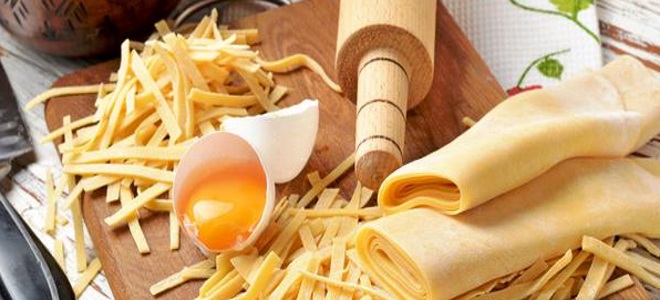
Next, you will learn how to cook at home. Thanks to the latter, the product is not only surprisingly tasty and tender, but also has an excellent, sunny color. The very process of creating the foundation is no different from the traditional one and it can be implemented without any difficulty.
Fill a large pot with water, add salt and bring to a boil. When it comes to the boiling point, add the noodles and boil for a few minutes or until the noodles are cooked through. Drain the noodles into a colander and remove all the water. It's always shocking when a recipe turns out to be easier than you expect. This pasta recipe is easier than you think. The food processor does a short job. You can buy a manual machine for pasta to make it thinner, but scalping at home will work just fine.
Have you ever made homemade pasta? Probably the best place to study pasta is Italy. But if you want to have homemade fettuccine today and not in Italy, and you don't have a pasta machine, here's the recipe for you. Start to finish, this is a 30 minute meal, including about 15 minutes of rest.
Ingredients:
- yolks - 4 pcs.;
- vegetable oil - 40 ml;
- flour - 200 g;
- salt - 5 g.
Cooking
- A mixture of yolks and butter is poured into the flour sifted and mixed with salt.
- The components are stirred until crumbs are obtained, which are collected in a lump and a tight dough is noticed.
- After 30 minutes of rest under the film, they begin to roll out the lump and cut the noodles.

Homemade noodles can be made a little easier by making the rolling process less labor intensive. An excellent effect is achieved by using , and adding vegetable oil. The dough, designed in this way, is easy and simple to roll out even without the use of flour for dusting - it does not stick to the table and rolling pin at all.
Put the lid on the food processor, turn it on and slowly pour hot water out through the spout. The mixture will initially look like cornmeal, and then form tiny little balls that swirl around the work bowl and finally form a big ball in the middle after a couple of minutes. Flatten it into a 1/2 inch thick pancake, then cut it into quarters. Cover the dough with a dry towel and let it rest for 10-15 minutes. Sprinkle some semolina or all-purpose flour on a clean, dry surface and place one of the four pieces of dough on it. Using a sliding pin, pull it out as thinly as you can. You can make it as thin as an envelope with a card in it, or up to 1/8" thick for a chewy, country-style pasta. Once you've rolled out all the sheets, use a sharp knife or pizza cutter to cut them as desired, one sheet at a time. You can cut them into any width that will suit the evening's sauce, whether it's spaghetti, fettuccine, pappardelle, or lasagna. Take this large pot of salt water, then boil the noodles for 3 minutes until you get all the dentine. Serve with sauce of your choice. To store pasta, toss it with a little semolina or flour to prevent sticking, then wrap in plastic wrap or place in a covered container and refrigerate for 2-3 days.
- Place both flours in a food processor.
- Give it another 30 seconds to knead the dough, then turn it off.
- It will be quite warm and flexible.
Ingredients:
- flour - 350 g;
- boiling water - 180 ml;
- sunflower oil - 3 tbsp. spoons;
- salt - 1 teaspoon.
Cooking
- Salt is thrown into boiling water, oil is poured.
- The resulting mixture is poured into a bowl with sifted flour and thoroughly kneaded first with a spoon, and when it becomes not so hot - with your hands.
- After 15 minutes, you can start rolling out the flour ball and cutting the noodles of the desired shape and size.
- Homemade custard noodles are dried and stored or used immediately.
Rice noodles at home
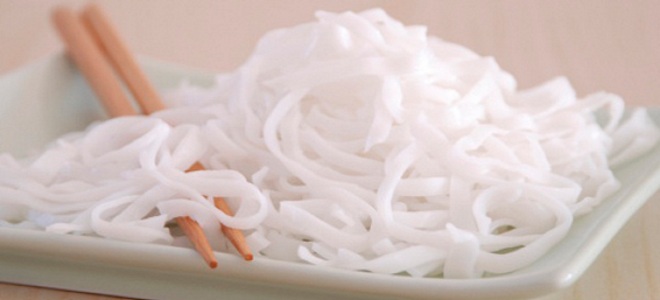
Homemade noodles made with rice flour will become great option to decorate a variety of culinary dishes from South-East Asia. Using the correct recipe suggested below, you can get a product that is just as good as the best production analogues.
Fortunately, most classic dishes such as soup from chicken noodles and beef stroganoff can still be put together in the morning with minimal last-minute work. Cooking the noodles on the stovetop or in the slow cooker for the last 15 minutes can be done when you set up the table and put together the salad. Ground beef, pork, or turkey usually require browning, as do large cuts. poultry and meat.
Also, some cooks prefer to caramelize onions, garlic, celery, or carrots before adding them to the slow cooker. Step 3 Rotate the slow cooker to the recommended high or low setting. low level and leave to cook food for required amount hours. Usually this firm texture is achieved by cooking the noodles minimum quantity time required for packing directions. Dishes such as beef stroganoff call for placing the noodles in a serving bowl and spooning the beef mixture over the noodles. Step 7 Continue cooking the pot or noodle stew for about five minutes if you added the noodles to the slow cooker. This ensures that the noodles and the rest of the ingredients come to the same temperature. Noodle Based Soups Step 1 Follow steps 1 to 3 above. Step 2 Check the ingredients to make sure they are made. Vegetables should be tender, and meat or chicken juices should clear up when pierced with a fork. Step 3 Remove the meat from the pot and keep it covered to keep warm if the meat is in large pieces. This step ensures that large cuts of meat are not pinched while the noodles are cooked to a high standard. If you are already cooking in a shorter time at a high level, or if the recipe contains ground or cube meat, you can skip this step. If there is not enough liquid in the pot to cover the noodles, add water or stock. Step 5 Cook the noodles in stock soup on high for about 15 minutes. If the recipe calls for the meat to be removed from the bone at the end of the cooking stage, do so while the noodles are cooking, then return the cooked meat to the slow cooker. Step 7 Continue to cook the soup for five minutes so that all the ingredients can reach the same temperature. Soup spoon into tureen or separate soup bowls. For cooking all day long the best option is the low setting. Always wait the recommended number of hours before serving slow meals. Even when the food smells appetizing and looks “done”, it should not be consumed before the time specified in the recipe has expired. It takes a slow cooker for several hours to reach the bacteria-killing temperature. Step 4 Prepare a pot to simmer on the stove when your food is almost done. . Well, after all that "fun food" we were ready for some simple, good old-fashioned, comfort cooking!
Ingredients:
- rice flour - 400 g;
- eggs - 3 pcs.;
- salt - 1 teaspoon.
Cooking
- The eggs are beaten with salt.
- Pour in rice flour and knead, adding a little water if necessary.
- Roll out the base to the desired thickness, cut into strips and dry.
Homemade rye flour noodles

The recipe for making homemade noodles can be the most unexpected, such as in this case. Rye flour is used as the basis for the preparation of the product, which affects both its final taste and appearance. Homemade noodles decorated in this manner are more healthy and less high-calorie.
How to make homemade curly noodles
The last few recipes have been a blast! I love the way it turns, no bones no skin chicken breasts, melt into your tender, juicy, piece of chicken! These noodles come in handy for many things, especially these types of dishes, but if you plan ahead and have time, make homemade ones. My great aunt Lola was famous for hers and they don't need anything more than a little broth and butter!
For beauty: colored stripes
They don't really need anything, and they'll probably just destroy them. Celery, onions, and a little fresh parsley, when I have it on hand, is all it takes and tastes the best. It should be just chicken, vegetables, noodles, and some "sauce" to hold everything together. Stirring in simple slurry cornstarch eliminates crap-stop chemicals. 😉. Speaking of "chemical crap storms," always be careful what bouillons and flavored bars you add. Those awful little cubes are nasty.
Homemade noodles are very easy to make yourself. And what a delicious chicken soup with homemade noodles.
Homemade noodles are made from ordinary unleavened noodle dough. From this dough you can make brushwood, dough for oriental sweets and many other products.
Noodle dough is made in two ways: only flour and eggs or with the addition of water, sometimes milk.
I make homemade noodles more often with the addition of water. There is no big difference, just egg noodles are less boiled.
Homemade Noodle Recipes
Homemade noodles on the water
Compound:
Flour in / s - 1 cup
Egg - 1 piece
Water - 3-4 tablespoons
Salt - 1-2 pinches
How to make homemade noodles:
Flour is different in the composition of gluten. Therefore, you may need a little more or less flour. I used to make noodles from my local flour. Next, I will tell you what to do if the dough turns out to be very cool and difficult to roll out, or, conversely, not very cool.
Before preparing any dough, the flour must first be sifted. When sifted, the flour is enriched with oxygen and the dough is more fluffy.
Sift the flour onto a dry table or into a bowl. I first knead the dough in a large bowl, and then knead it on the table.
Make a well in the center of the flour hill. Pour one or two pinches of salt. Crack an egg and pour in water.
Gently, with a spoon or hands, we begin to rake up the flour to the center. Knead the dough.
When all the flour in the bowl is mixed, sprinkle the table with flour. We spread the dough and begin to knead it well. Press the dough down slightly to make it flatter. Fold it in half and press it with the back of your hand.
Then turn over and repeat again: press with the back of your hand and turn over a piece of dough. If necessary, sprinkle more flour on the table. The dough should be elastic and elastic.
I always wrap the dough in a damp gauze napkin. Can be wrapped in cling film or plastic bag. Leave the dough for at least 30 minutes.
During this time, the gluten disperses and the dough becomes more elastic. By the way, at this stage, the dough can be frozen in the freezer and before being rolled out, defrost at room temperature. I prefer to dry already cooked noodles.
Then cut off small pieces from a piece of dough, which will be convenient for you to roll out.
Sprinkle the table with flour and roll out the dough thinly. The dough needs to be rolled out in different directions and turning it from one side to the other.
Roll up the rolled out layer of dough into a flat roll and thinly slice the noodles. See the photo below for the egg noodle recipe.
If a chicken bouillon already ready, you can immediately cook the noodles. If you are going to store the noodles, dry them in an oven, electric fruit dryer, or leave them overnight at room temperature. Dry the noodles in the oven at a temperature not exceeding 50 degrees. Dry for 5-7 minutes with the door closed. Then turn the noodles over so that they do not stick together in one piece and dry them with the door open.
You need to store homemade noodles in a paper bag or in a jar, tying the jar with a cotton napkin. I tie with gauze. So the noodles breathe and do not deteriorate for a long time.
egg noodles
Egg noodles are made without adding water or milk. If the dough turns out to be steep, another egg or just the yolk is driven in.
Compound:
Flour in / s - 1 cup
Egg - 2-3 pieces
Salt - 1-2 pinches
How to do egg noodles:
Make egg noodles in the same way as the noodles in the previous recipe.
Sift flour. 
Mix the sifted flour and salt in a bowl. Make a well in the center and beat in the eggs. 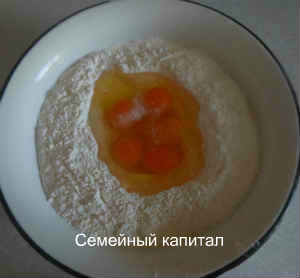
Using a fork or spoon, gradually mix in the flour and eggs. Knead the dough until all the flour and eggs are combined. Watch how to do it in this short video:
I apologize for the extraneous noise: the microwave was working and I forgot to turn off the sound on the TV.
Lay the dough out on a floured board. Knead the dough until it becomes homogeneous. Well kneaded dough does not stick to hands. 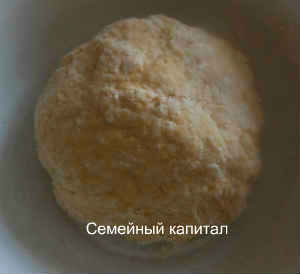
Wrap the dough in a damp cloth or bag and let it rest for 30 minutes.
Divide the dough into several pieces and roll into a thin layer. 
Roll up. 
Cut the noodles with a knife. 
You can cut the noodles in different ways: across the folded dough or obliquely at an angle. I cut the noodles at an angle, gradually making transitions from one side to the other.
Egg noodles can also be used immediately or dried in an electric dryer or oven.
Store egg noodles in a paper bag or jar tied with a napkin.
I promised to tell you what to do if the dough turned out very steep or liquid.
In the first case, wrap the dough in a damp towel or napkin and leave for at least 30 minutes. The flour will absorb the moisture from the paper towel. Do not be afraid that the dough will not be very cool. Before rolling out, punch it down on a floured board.
If the dough is not very cool, you already know what to do. Sprinkle the table with flour and roll in the flour.
My grandmother and nanny made noodle dough with sunflower oil. No eggs were added to the post at all. During my childhood, there was no such choice of pasta. And yes, they were different. Therefore, homemade noodles were often made.
I myself have never tried to make homemade noodles with sunflower oil. But the technology for making noodles is the same. Interestingly, you can try cooking noodles with sunflower or other vegetable oil.
Get the latest articles in your inbox